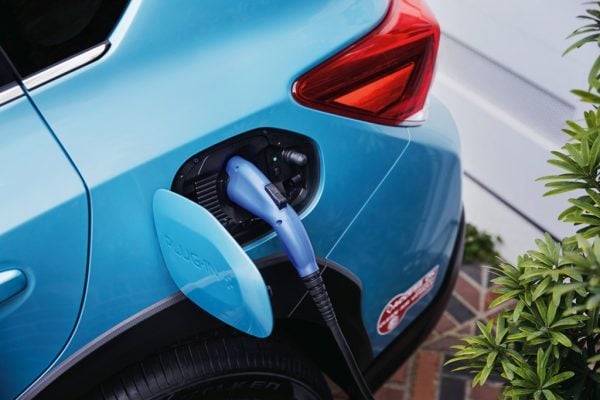Plug-In Hybrid NOT As Fuel-Efficient As Official Figures Claim
Then there is the battery replacement cost for the Plug-In Hybrid after the battery warranty ends.
On the 2nd of March this year, British Consumer Champion, Which? issued a statement showing proof of the unrealistic fuel efficiency figures for plug-in hybrid cars that have been advertised by the vehicle manufacturers.
These findings also show that they will potentially be costing the PHEV owner hundreds of pounds (Ringgit) more in fuel costs and maintenance in the long run. These new tests by Which? are also along the same lines of what has been reported by Greenpeace before and also Transport & Environment who have all conducted detailed tests and studies into PHEV’s.

It starts with this rather revealing report from Transport and Environment (T&E) that states, two of the most popular plug-in hybrid in 2020 all emitted more CO2 than advertised, when tested in the real world and that governments should end the purchase subsidies and generous tax breaks for plug-in hybrids that are fuelling another emissions scandal.
The BMW X5 and Volvo XC60 PHEV’s emitted 28-89 percent more CO2 than advertised when tested by Emissions Analytics on a fully charged battery in optimal conditions. On an empty battery, they emitted three to eight times more than official values. When driven in battery-charging mode, which could become more common as motorists charge up ahead of using electric mode in low-emissions zones, the PHEVs emitted three to 12 times more.

Julia Poliscanova, senior director for clean vehicles at T&E, said: “Plug-in hybrids are fake electric cars, built for lab tests and tax breaks, not real driving. Our tests show that even in optimal conditions, with a full battery, the cars pollute more than advertised. Unless you drive them softly, carbon emissions can go off the charts. Governments should stop subsidizing these cars with billions in taxpayers’ money.”
Once the battery is flat, the three plug-in hybrids can only drive 11-23km in engine mode before they overshoot their official CO2 emissions per km, T&E estimates. This is contrary to the misleading carmaker narrative that PHEVs on sale today are suited for long journeys. In fact, they have to be charged much more frequently than battery electric cars, which do around 300km on a single charge.

While carmakers blame customers for using the engine too much, the PHEV models on sale today often lack the necessary EV power, range or charging speed. For example, two of the three cars tested, the BMW X5 and Volvo XC60, cannot fast charge.
Soon after Greenpeace issued a statement showing the inefficiency of PHEV’s. The Greenpeace report states, the majority of hybrid models are heavier and overpowered SUVs and luxury sedans, which limits their ability to reduce emissions, according to the analysis.

The average engine output of currently available plug-in hybrids in Germany was 335hp, while that of all newly registered cars in 2019 was only 158 hp. In addition, tests by German automobile association ADAC show that the fuel consumption of hybrid cars in everyday use is many times higher than indicated in dealer information.
“If the federal government now promotes the sale of plug-in hybrids, it will only help the car companies’ short-term bottom line, but it will damage the climate,” said Greenpeace transport expert Benjamin Stephan.
“The German auto industry has to adapt quickly to the post-combustion engine era. Deceptive packages like plug-in hybrids delay this change.”
The Greenpeace analysis evaluated data from the 88 plug-in hybrid models currently available in Germany. Of those, 40 are SUVs, while 21 are upper and upper-middle class models.

The BMW X5 and Volvo XC60 PHEV’s emitted 28-89 percent more CO2 than advertised when tested by Emissions Analytics on a fully charged battery in optimal conditions. On an empty battery, they emitted three to eight times more than official values. When driven in battery-charging mode, which could become more common as motorists charge up ahead of using electric mode in low-emissions zones, the PHEVs emitted three to 12 times more.
‘Which’ is a consumer ‘champion’ organization that has been testing 22 popular PHEV models found they all fell well short of the car makers’ claims, with the worst being 72 per cent less efficient than claimed and the ‘best’ still being 39 per cent below its official fuel economy rating.
Meanwhile, across all of the tests done by Which? were tougher than official tests to better represent real-driving conditions, found the cars were on average 61 per cent less fuel-efficient than the official fuel economy rating, meaning motorists could be paying on average £462 (about RM2,616) more a year in fuel costs.
Fuel consumption figures are an important factor for consumers (not for most Malaysians as PHEV’s get a good import tax break which brings their selling price below their petrol powered siblings) when buying a plug-in hybrid vehicle.
However, manufacturers’ fuel consumption figures – miles per gallon (mpg) – are calculated using the Worldwide Harmonised Light Vehicle Test Procedure (WLTP) and are based on a model’s electric driving range, among other factors. This means the mpg that can actually be achieved in real-world driving can be much lower and drivers could consume and spend more fuel than expected.
In one particularly bad case, the consumer champion found the BMW’s X5 plug-in hybrid was 72 per cent less efficient than official figures and could cost the owner £669 (about RM3,789) more a year in fuel costs.
According to BMW, this model could cover 188.3 miles per gallon, but Which? tests found it could only cover 52.8 miles per gallon. Which? calculated, based on the manufacturer’s mpg, owners might expect to spend £258 (about RM1,461) on fuel annually, however, using Which?’s mpg figure, they would spend £927 (about RM5,250) a year.
Resale Values
Ownership of any plug-in hybrid comes with the replacement battery costs after the manufacturers warranty ends and this is why used hybrid values are very low today.